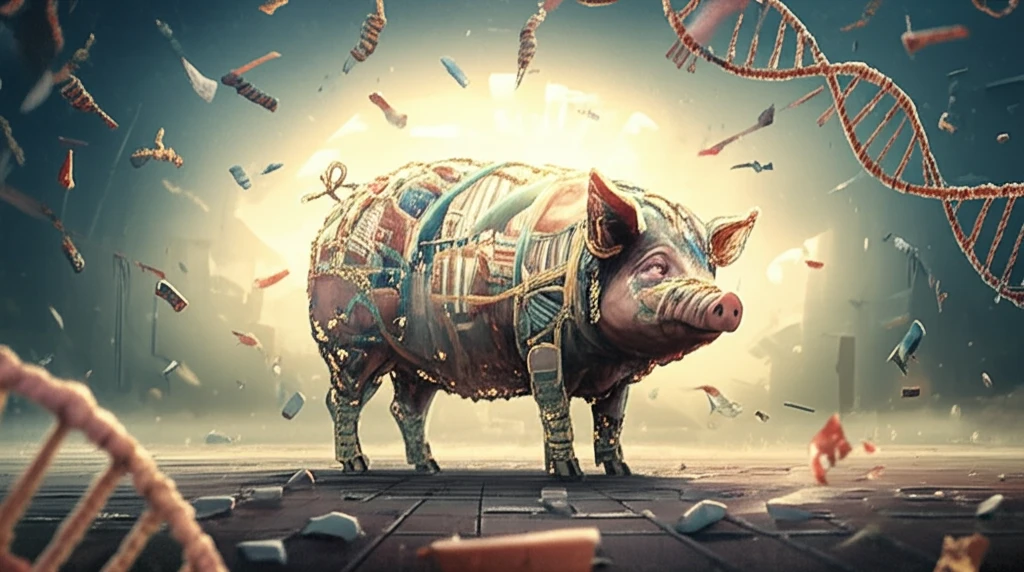
Decoding Pig Genetics: How Epistasis Could Revolutionize Meat Production
"Unlocking the secrets of gene interactions in pigs could lead to more efficient and sustainable meat production."
For years, scientists and breeders have been trying to understand how genetics influence the characteristics of livestock, especially when it comes to meat production. We've learned a lot about individual genes and their effects, but it turns out that genes don't work in isolation. They interact with each other in complex ways, a phenomenon known as epistasis, which can significantly impact traits like carcass composition in pigs.
Epistasis refers to the interaction between different genes, where one gene can mask or modify the effect of another. These interactions can be additive, where the combined effect is the sum of individual effects, or non-additive, where the combined effect is greater or less than the sum of individual effects. Understanding epistasis is crucial because it can help us predict how specific genetic combinations will influence desired traits.
A recent study published in the Journal of Animal Science sheds light on the role of epistasis in determining carcass characteristics in pigs. The researchers investigated how interactions between quantitative trait loci (QTLs), regions of DNA associated with particular traits, influence body composition. These findings are key to optimizing breeding strategies and enhancing meat quality and production efficiency. Let's break down what this research means for the future of pork production.
What Does This Study Tell Us About Epistasis in Pigs?

The study focused on a population of pigs descended from Pietrain sires and crossbred dam lines. Researchers analyzed a large number of animals, tracking data on carcass cuts, lean tissue, and fat tissue weights. They looked at over 80 molecular markers spread across several chromosomes to identify significant epistatic QTL pairs—gene combinations that together influence specific traits.
- Prevalence of Additive Interactions: The most common type of gene interaction observed was additive × additive, meaning the combined effect of these genes was simply the sum of their individual effects.
- Location of Epistatic QTL: Epistatic QTLs were found on almost all chromosomes studied, except for SSC13, indicating that gene interactions affecting carcass traits are widespread throughout the pig genome.
- Percentage of Phenotypic Variance: Epistatic QTL pairs accounted for a notable portion (5.8% to 10.2%) of the phenotypic variance, highlighting that epistasis plays a significant role in determining these traits.
- Specific Chromosomes of Interest: Chromosomes SSC1, SSC2, SSC4, SSC6, SSC8, and SSC9 harbored the greatest number of epistatic QTLs, making them key targets for further investigation.
- Major Effect QTL Pair: The epistatic QTL pair with the greatest effect was identified for entire loin weight between two locations on SSC7, explaining 10.2% of the phenotypic variance. This discovery underscores the importance of specific gene combinations in optimizing valuable carcass traits.
What Does This Mean for Pig Farmers?
Understanding epistasis is more than just an academic exercise; it has practical implications for pig farming. By identifying key gene interactions, breeders can develop more effective breeding strategies to improve carcass quality. For example, knowing that specific combinations of genes on SSC7 have a major impact on loin weight could guide selection decisions, leading to animals with more desirable traits. The goal is to create pigs that produce high-quality meat more efficiently, improving both profitability and sustainability.
